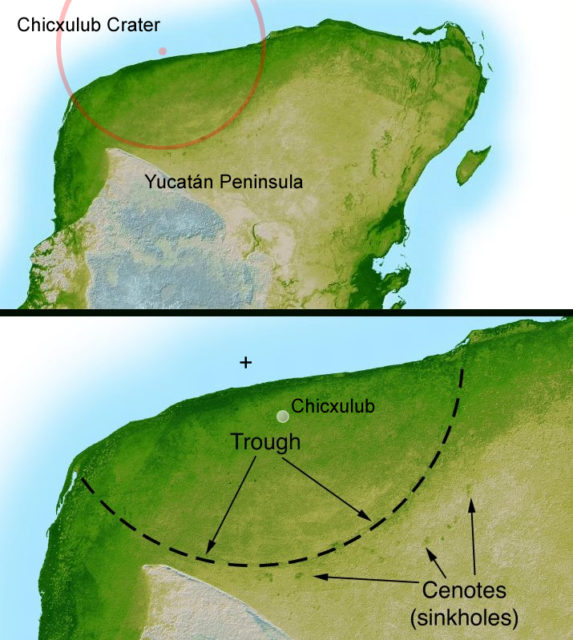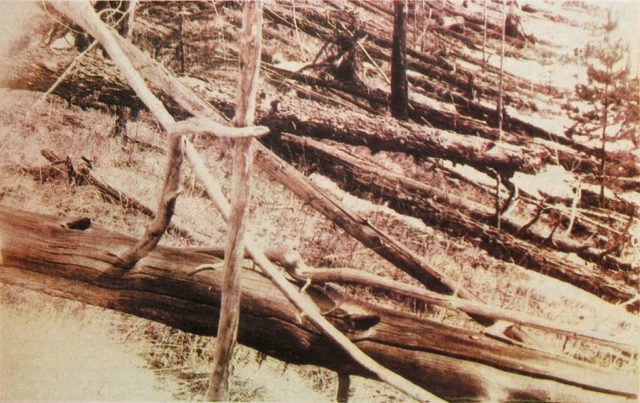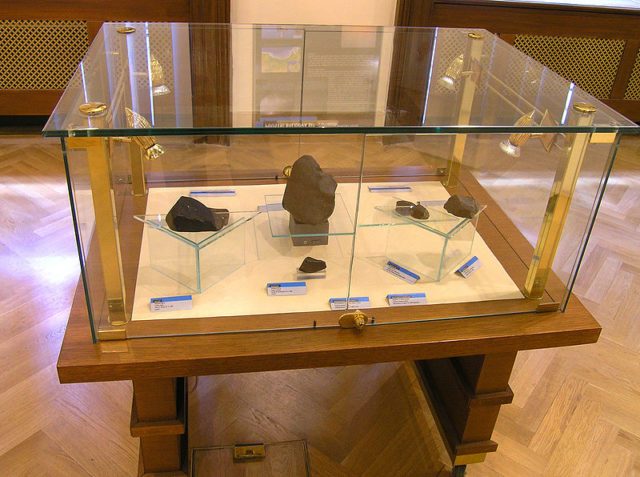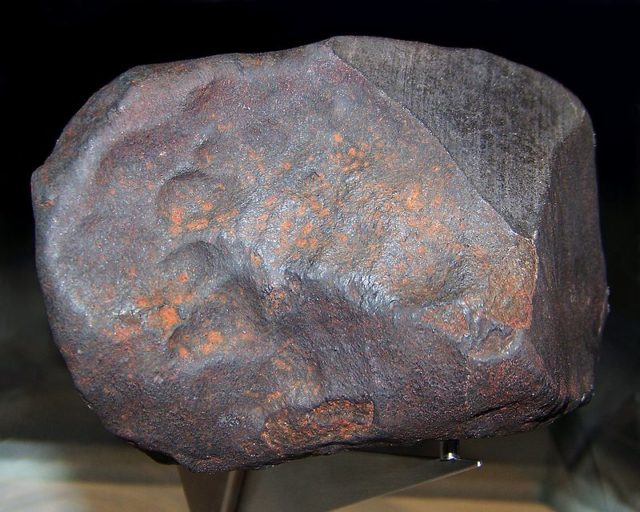Throughout history, countless astronomical objects have collided with Earth.
Fortunately, most objects that enter the atmosphere either disintegrate or shrink to an insignificant size before they hit the ground, so not many of them cause impact events.
Impact events are collisions that cause measurable effects and can affect the Earth’s biosphere and physical properties. One major impact event was the Chicxulub impactor’s collision with Earth, which most likely caused the Cretaceous-Paleogene extinction event during which around 75% of all plant and animal species died out. The giant asteroid hit Earth 66 million years ago and was exceptionally large, measuring approximately six miles in diameter. All other known impact events have involved much smaller astronomical objects and much less damage.

In modern history, the most significant impact event was the Tunguska event which occurred in Siberia, Russia, in 1908. An unknown astronomical object of approximately 200–600 feet in diameter exploded in the air above the desolate Siberian taiga. No human casualties were reported, but the massive explosion flattened 770 miles of forest and decimated the local animal population.

Following the Tunguska event and several other impact events in the first half of the 20th century, scientists and astronomy enthusiasts wanted to devise a way to record astronomical objects from their entry to their mid-air explosion or collision with the ground. Up to this day, only several impact events have been successfully recorded.
The first such event was the impact of the Pribram meteorite, which occurred in Czechoslovakia, present-day Czech Republic, in 1959. The approach of the meteorite was observed by members of the local astronomy society and several scientists from Prague University, who approximated its trajectory.
Two automated cameras were used to photograph the meteorite’s path from its atmospheric entry to its collision with the ground. The extremely bright trail of light behind the meteorite could be seen throughout western Czechoslovakia, and scientists estimated it was 31 miles long. The meteorite’s initial weight was approximately 30 pounds, but it exploded over the town of Pribram and broke up into several pieces.

Remnants of meteorites on the ground are usually hard to find, as mid-air explosions scatter small fragments of meteorites across large surfaces. These fragments also often penetrate the ground and remain buried. The Czechoslovak researchers bypassed these problems through the use of the automated cameras. The cameras accurately tracked the meteorite’s trajectory, which was then used to determine the object’s orbit and its point of impact.
A search party was organized and four pieces of the stone meteorite were recovered. The largest of them was called “Luhy,” weighing 9.76 pounds and named after the village near which it was found. It penetrated the plowed land of a local field to a depth of 10 inches before bouncing out and settling in the field.
The success of these Czechoslovakian astronomers prompted countries across the world to organize various systems of automated meteor-tracking. However, none of the programs were very successful: the United States’ “Prairie Network” was operated by the Smithsonian Astrophysical Observatory from 1963–75 and managed to record only several minor impact events. Likewise, the Canadian Meteorite Observation and Recovery Project, which operated from 1971–85, recovered only a single meteorite named “Innisfree.”
The European Fireball Network, which is a descendant of the original Czechoslovak program that tracked the Pribram meteorite, remains the most successful system for tracking impact events. In 2002, the efforts of its researchers led to the recovery of a 13-pound meteorite near the famous castle of Neuschwanstein in Bavaria, Germany. A 3.6-pound piece of this meteorite was sold to a private collector for a whopping price of $330,000.
Sadly, no meteorite-tracking program managed to track the trajectory of the majestic meteor which exploded over the Russian city of Chelyabinsk in 2013. Since the massive explosion occurred over a densely populated urban area, it caused mass panic and an estimated $30 million in material damage. Although there were no human casualties, around 1500 people were injured during the commotion.
The explosion of the Chelyabinsk meteor was the largest impact event since the Tunguska event in 1908. The meteor had an initial diameter of around 20 meters and weighed 13,000 tons. Despite its enormous and threatening size, the meteor remained undiscovered by astronomical observatories due to its orbit passing close to the sun.
However, a Russian researcher named Viktor Grokhovsky from the Ural Federal University led a team of scientists to the lake of Chebarkul, 100 miles west of Chelyabinsk, and managed to recover a large fragment of the meteor from the bottom of the lake.

The highly-advanced technology of the digital age allows astronomers to successfully track and observe meteors, comets, and asteroids. This technology also allows researchers to keep track of the orbits of astronomical objects so that they can warn humanity of potential threats from outer space.
Still, the unexpected explosion of the Chelyabinsk meteor proves that space hides many unpleasant and potentially life-threatening surprises and that advanced automated meteor-tracking programs could save humanity from extinction.
